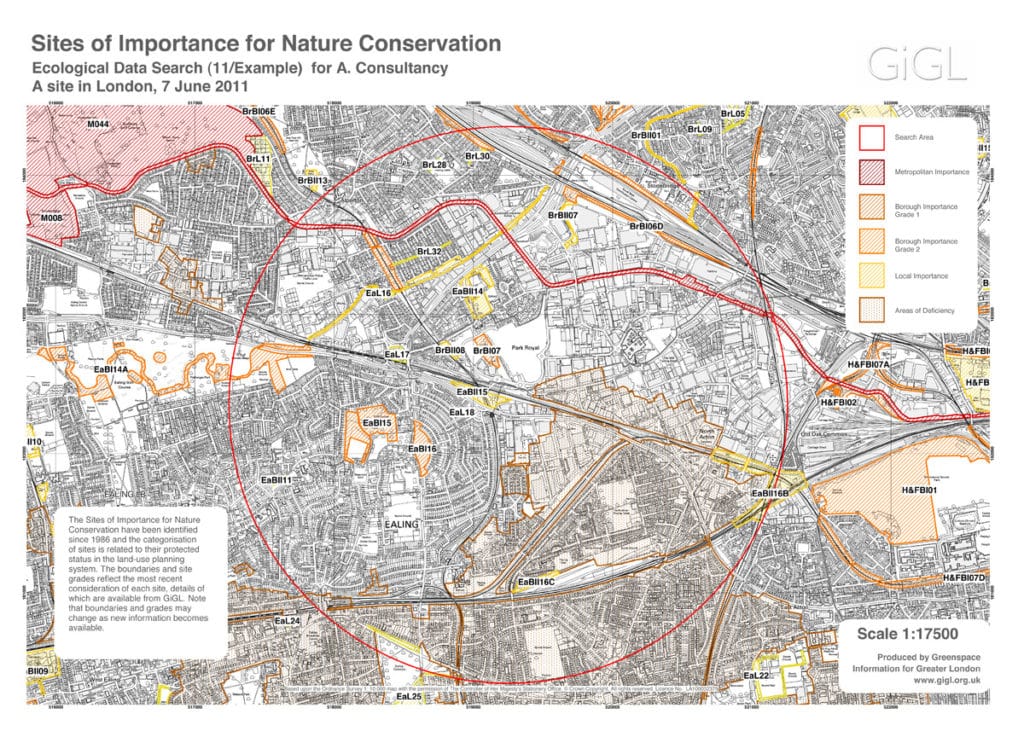Maria Longley, GiGL Records Officer

GiGL is now the official custodian of information on London’s 1,500 sites of importance for nature conservation – their citations and boundary information. This core dataset is one on which many of our products and services rely. Its accuracy is vital and we are working closely with our partners to help them update and maintain this important collection of data.
Selection of and changes to sites of borough or local importance is now the responsibility of the local boroughs. The London Wildlife Sites Board has been set up to support and guide boroughs in selecting sites, and to help provide a consistent approach across London. It has produced guidance on a process for selecting and confirming SINCs, which is not compulsory, but is designed to ensure that the process is compliant with various policy frameworks.
The wildlife sites board process suggests that each borough should have an up to date evidence base of all land of conservation importance within their administrative area, regardless of ownership. Boroughs should be aware of priority habitat and species distribution. Land should be surveyed and evaluated against criteria set out in the guidelines before recommending which sites should be accorded SINC status and at which level.
These recommendations can then be taken to a local site selection panel for independent and expert advice on the borough’s approach and the sites selected. This panel should be a mix of local experts and representatives of statutory agencies, relevant NGOs, and borough officials. The borough should then present a schedule of SINCs or proposed SINCs to the London Wildlife Sites Board for consideration.
It is vital that GiGL is informed of any changes to SINC designations as it is used to inform a number of tasks that rely on the accuracy of this information. Delays in updating the dataset for one borough has a knock-on effect on other boroughs, misrepresenting the bigger picture.
GiGL’s busy data search service provides SINC data in reports that inform planning applications. Accurate information provided at this stage will inform an ecological consultant’s recommendations for a site proposed for development.
The SINC data is also used to calculate areas deficient in access to nature. This ‘areas of deficiency’ dataset was originally created by the GLA’s biodiversity team to measure built-up areas more than a 1km walking distance from an accessible metropolitan or borough SINC. This dataset is currently being updated and reviewed. This work is heavily dependent on the accuracy of the SINC information we hold to provide accurate maps for the borough that can be used. in planning park improvements or healthy walks.
Information on SINC locations and boundaries has also contributed to various modelling work undertaken on behalf of our partners, including the complex London street tree model. London’s SINC data is also used by organisations and partners who have a national remit, and Local Wildlife Sites information does inform national policy and work. For example, Natural England have a country-wide collated SINC dataset to inform their national teams’ work, and the Wildlife Trusts regularly review SINC data to inform their research on the wildlife site system in the UK.
Recently, we updated several boroughs’ GIS data to help them report on national indicators in their areas. Boundaries and SINC designations were updated as part of this process. With help of the boroughs, GiGL would like to make similar updates to the SINC citations.
We can help borough officers going through the process of changing or selecting SINCs by providing partners with a current evidence base relating to species, habitats, and open spaces.
If you’d like any assistance in selecting SINCs, get in touch with maria@gigl.org.uk.
